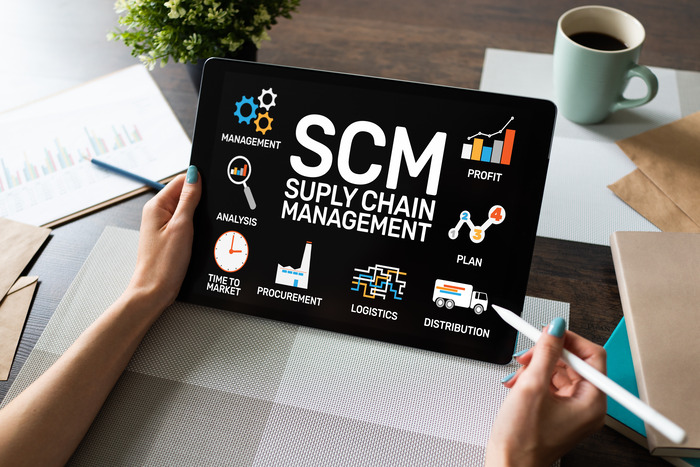Blockchain technology is now a revolutionary tool for improving supply chain transparency, efficiency, and security. It ensures a tamper-proof and immutable ledger of transactions. This makes it an ideal solution for addressing common supply chain challenges such as counterfeit goods, delays in shipment, and lack of accountability.
However, many supply chain managers are still trying to understand what blockchain is and how it might benefit their operations. This comprehensive provides you with the knowledge needed to determine how implementing a blockchain solution can add value to your supply chains. Read on!
Identify The Need For Blockchain
First, scrutinize your current supply chain processes. Are there bottlenecks causing delays? Do you need greater transparency between suppliers, manufacturers, and vendors to build trust? Have counterfeit goods infiltrated your network? Answering these questions enables you to identify areas where blockchain for supply chain can drive improvement.
For instance, if you purchased counterfeit supplies through unauthorized dealers, damaging business revenue and brand reputation, blockchain provides transparency into the distribution network, making it easier to detect counterfeits.
Next, perform a feasibility study to determine if blockchain can address your supply chain pain points cost-effectively. Estimate the potential return on investment and timeline for rolling out a blockchain solution. Then, present the business case to stakeholders and technology leaders to garner buy-in before moving forward.
Define The Scope And Objectives
Blockchain implementation requires a well-defined scope and clear objectives. Start by determining whether you’ll apply it to a particular section of your supply chain or if a comprehensive overhaul is necessary.
For instance, a food producer might focus initially on traceability for a single product line, while a logistics provider could aim for a broad implementation across its entire network.
By establishing a focused scope and well-defined objectives upfront, you can tailor your blockchain implementation to address potential issues and deliver tangible results. Such a targeted approach ensures that you allocate resources effectively and leverage blockchain to its fullest potential. This enables you to pave the way for an effective integration that aligns with your unique business needs.
Choose The Right Blockchain Platform
Selecting the appropriate blockchain platform is crucial for a successful implementation. Consider whether a public or private blockchain is better suited for your supply chain needs. Public blockchains are more accessible and can offer transparency benefits. However, they may lack the scalability and privacy required for sensitive supply chain data. As a result, private blockchains, which restrict access to authorized participants, are often the preferred choice for supply chain applications.
For instance, a pharmaceutical company handling sensitive medical data should choose a private blockchain to ensure strict access controls and data privacy. On the contrary, a diamond producer aiming to provide complete traceability and authenticity assurance can leverage a public blockchain, enabling stakeholders to verify the origins and journey of their gems.
Also, evaluate specific platforms depending on criteria such as scalability, security, interoperability with existing systems, and ease of development. For example, Ethereum, with its powerful smart contract capabilities, could be well-suited for a logistics provider seeking to automate contractual agreements and streamline processes. Alternatively, Hyperledger Fabric, with its modular architecture and advanced privacy features, may appeal to a consumer goods manufacturer looking to share data selectively with partners while maintaining confidentiality.
Develop A Proof Of Concept
Before committing to a full-scale deployment, it’s essential to have a Proof of Concept (PoC) to assess the practicability and potential impact of blockchain in your supply chain. This involves creating a simplified prototype or pilot that demonstrates its core functionality and capability.
For instance, a global food producer might develop a PoC tracking the journey of a single product line from farm to retailer, involving key participants like growers, processors, logistics providers, and distributors. This pilot would showcase how data is securely captured, shared, and verified on the blockchain, providing immutable traceability.
Engage with critical stakeholders throughout the development process, gathering valuable feedback and insights. Their input is crucial to ensure the solution meets the needs of all parties involved across the supply chain lifecycle. This enables you to recognize and address potential challenges, fine-tune the solution, and build confidence in blockchain’s capabilities.
Integrate With Existing Systems
Seamless integration between the blockchain implementation and your existing supply chain management systems is critical for achieving a cohesive and efficient solution. This integration may require custom development work or the utilization of Application Programming Interfaces (APIs) to ensure smooth, bidirectional data flow between the blockchain and your legacy systems.
Additionally, carefully plan and execute the migration of existing data onto the blockchain. You must perform this meticulously, with rigorous attention to data integrity, security, and privacy. Consider employing advanced encryption techniques and access controls to limit access to authorized persons only.
Embrace Continuous Improvement And Innovation
Blockchain revolutionizes business models, but not without continuous improvement and innovation. So, monitor the performance of the system using metrics aligned with your initial objectives to identify areas that need alterations.
Consider gathering feedback from users across the supply chain ecosystem, including suppliers, logistics providers, retailers, and end consumers. Their insights and experiences can uncover areas for optimization, highlight emerging pain points, and identify new opportunities for leveraging blockchain’s capabilities.
Additionally, stay informed about the latest advancements and innovations in blockchain technology. Attend industry events, follow thought leaders, and participate in the community to stay ahead of the curve. Also, explore new use cases, scalability improvements, and emerging best practices that could benefit your supply chain operations.
Conclusion
Implementing blockchain in purchase and supply chain management is a challenging but rewarding endeavor. It can significantly enhance operational transparency, efficiency, and security. By following this structured approach, you can navigate the challenges of blockchain adoption and realize its full potential. The key to success depends on careful planning, transparency, and a commitment to continuous improvement.


